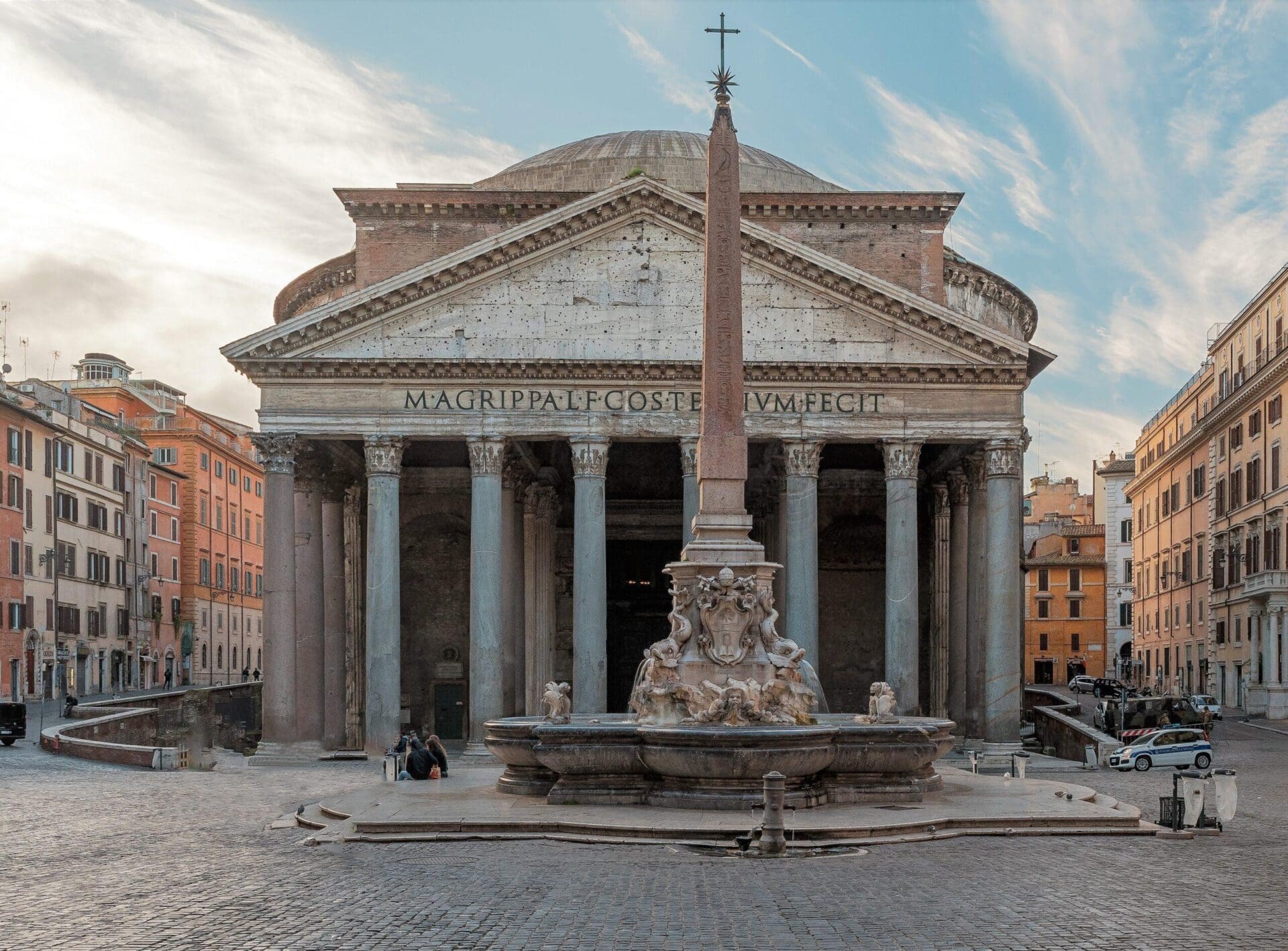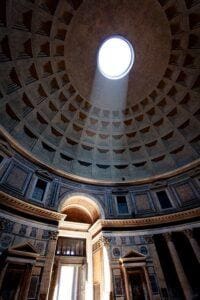Discover the awe-inspiring beauty of The Pantheon in Rome: A must-visit masterpiece of ancient architecture

The Pantheon Rome: An Icon of Ancient Architecture
Erected as a temple to the Roman gods, the Pantheon in Rome is a masterpiece of ancient architecture that continues to mystify visitors and architects alike. Its construction was initiated by Marcus Agrippa during the reign of Augustus (27 BC-14 AD) but was completely rebuilt by Emperor Hadrian in around 126 AD. Unlike many other Roman buildings, the Pantheon managed to withstand the ravages of time and human activity, offering a unique insight into the grandeur and splendor of the Roman Empire at its height.
Originally, the Pantheon functioned as a Roman temple before it was consecrated as a Christian church, known as Sancta Maria ad Martyres, in 609 AD. The building’s continuous use has contributed significantly to its preservation, allowing it to retain its ancient essence in the midst of a bustling, modern city.
The Architectural Marvel: Pantheon’s Unique Design
Possibly the most remarkable aspect of the Pantheon is its extraordinary architecture. The most striking feature is undoubtedly its enormous dome, which remains the largest unreinforced concrete dome in the world to this day. This impressive 142-feet structure, both in diameter and height, is a testament to the engineering prowess of the ancient Romans.
Adding to the mystique is the oculus, a 30-foot hole at the dome’s apex, the building’s only source of natural light. This was not merely a technical accomplishment, but also had symbolic significance, linking the temple with the heavens. On sunny days, the light pouring in through the oculus illuminates the interior, creating an awe-inspiring spectacle.
The Pantheon’s portico or entrance, with its grand columns made of single pieces of granite, adds an imposing character to the building. The blend of traditional Greek and innovative Roman styles is evident in its design, epitomizing the cultural fusion that characterized the Roman Empire.
Pantheon Today: A Living Symbol of Rome
Despite being nearly two millennia old, the Pantheon remains very much a part of Rome’s living cultural landscape. It is a popular tourist attraction, drawing millions of visitors each year who come to marvel at its architectural brilliance and soak up its historical aura.
Simultaneously, the Pantheon continues to function as a church, hosting masses, weddings, and occasionally, the rites of the Catholic Church. Remarkably, it also serves as the final resting place for several prominent figures, including the Renaissance artist Raphael and two Italian kings, Vittorio Emanuele II and Umberto I.

The Pantheon stands as a living testament to the incredible ingenuity and the architectural genius of the Romans. It is not just an ancient building, but a symbol that bridges the past and the present, demonstrating the timeless nature of true art and architecture. No visit to Rome is complete without stepping into the cool interior of the Pantheon and gazing up at its grand dome, a masterpiece that continues to inspire and amaze after nearly two thousand years.
Pantheon guided tours and tickets
Exploring the Pantheon with a guided tour can significantly enrich your experience. A tour guide can provide insights into the history, architecture, and cultural significance of the building that you may miss when visiting on your own. Buy your tickets for a guided tour at Pantheon-Tickets.com
Guided tours are offered by numerous companies and they can be found by doing a quick internet search. Some popular platforms include Viator, GetYourGuide, and TripAdvisor. The tours vary in terms of duration, price, and what’s included, so be sure to check the details before booking. Some tours may also include visits to other nearby historic sites.
On these tours, knowledgeable guides bring the Pantheon to life, sharing captivating stories about the Roman gods to whom the Pantheon was dedicated, the emperors who commissioned and reconstructed it, and the transformations the building has undergone over the centuries.
In addition, some guided tours offer skip-the-line access. Even though the Pantheon’s entry is free, it can still get quite busy, especially during peak tourist season. Skip-the-line access allows you to bypass any queues, ensuring that you can maximize your time exploring the site.




